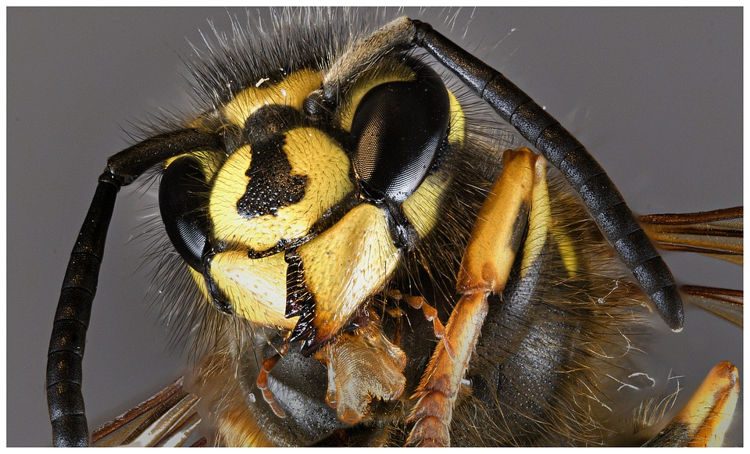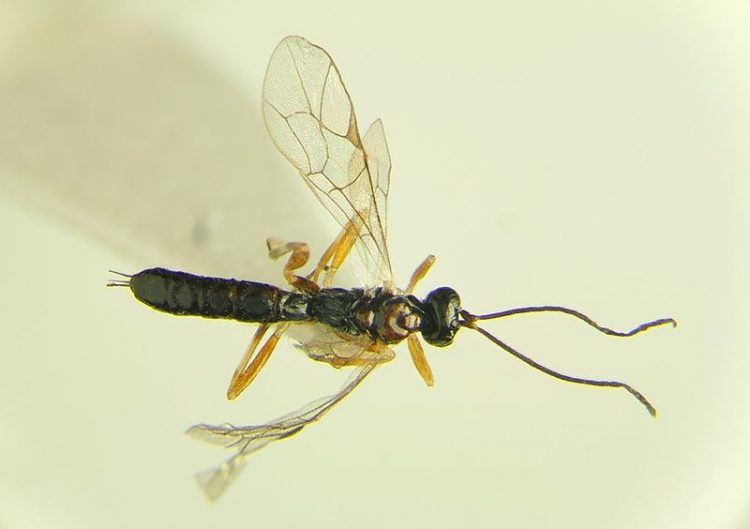The Amazon rainforest is home to many frightening creatures, like giant Anacondas, flesh-eating piranhas, just to name a couple, and now you can add a new one to the list, a species of wasp that lays its eggs on the abdomen of spiders and then hijacks their brain, essentially turning them into zombies.
The previously unknown wasp of the Zatypota genus was discovered by researchers with the University of British Columbia (UBC) working in the Ecuadorian Amazon basin. They documented its symbiotic relationship with a species of so called “social spiders” and recently published some truly terrifying findings in the Ecological Entomology scientific journal. This newly discovered wasp is apparently able to hijack the nervous system of its host, forcing it to leave its colony, which it otherwise rarely does, protect the wasps larva and ultimately get eaten alive. It essentially turns the social spider into a zombie-like drone that then does the wasp’s bidding.

Photo: jodeng/Pixabay
“Wasps manipulating the behavior of spiders has been observed before, but not at a level as complex as this,” said Philippe Fernandez-Fournier, lead author of the study. “Not only is this wasp targeting a social species of spider but it’s making it leave its colony, which it rarely does.”
That’s really what makes this new species of wasp different from other members of the Zatypota genus, and most other parasitoid insects – its ability to completely alter the behavior of social spiders. The influencing and commanding of solitary spiders by Zatypota wasps has been documented before, but this is the first time the same time of behavior has been observed in the the highly social Anelosimus eximius spider.
Fernandez-Fournier and his team were in Ecuador to study the parasites living in the nests of Anelosimus eximius spider, one of only 25 known species of social spiders worldwide. They are known for living in large colonies from which single individuals rarely stray, working together on catching prey and even sharing parental duties. So when scientists noticed some spiders moving a few feet away from their colonies and weaving “cocoon webs”, they knew something was wrong.
“It was very odd because they don’t normally do that, so I started taking notes,” Philippe Fernandez-Fournier told UBC News. So he and his colleagues took some of these weird cocoons back to their laboratory to see what would emerge from them. To everyone’s surprise, it was a wasp.
Gathering data from various research projects conducted in Ecuador between 2012 and 2017, the UBC researchers were able to piece together the entire life cycle of this elegant and gracious wasp and its frightening parasitic relationship to the tiny Anelosimus eximius spider.

Photo: “Spider Hosts” Study/Wikimedia Commons (CC BY 3.0)
It all begins with an adult female wasp laying its eggs on the abdomen of one of these social spiders. A larva hatches soon after that and attaches itself to the hapless arachnid. This is when the nightmare begins for the spider. The larva starts feeding on its blood-like haemolymph, steadily growing and taking over the body of its host. At one point, the spider will leave its colony and start weaving a protective cocoon web for its tormentor. When it’s done, the spider will patiently wait to be killed and eaten. After feasting on its host, the parasite will enter the cocoon and emerge as an adult wasp, nine to twelve days later, ready to begin the cycle all over again.
Samantha Strauss, co-author of the study, acknowledged that other parasitoid wasps have discovered before, but pointed out that the mind-control technique of this new species is much more “hardcore”.
“The wasp completely hijacks the spider’s behavior and brain and makes it do something it would never do, like leave its nest and spinning a completely different structure. That’s very dangerous for these tiny spiders,” Strauss added.
How exactly this new wasp species turns its hosts into zombies is still a mystery, but researchers believe that it might inject hormones into the spider, making it think that it’s in a different life stage and cause it to separate from their colonies.
As to why the wasps target large colonies of social spiders instead of solitary species, the UBC team believe that it’s just a practical choice. A colony simply ensures a large and stable supply of hosts. In fact, they observed that the larger a colony of Anelosimus eximius spiders was, the higher the chances that it would be targeted by the wasps.
This new and terrifying species of wasp is just the latest insect body-snatcher we’ve featured on Oddity Central. If you find this sort of behavior fascinating, you may also want to check out this tiny fly that makes bumblebees dig their own graves, this wasp that turns cockroaches into zombies or the fly that turns bees into mindless drones.






